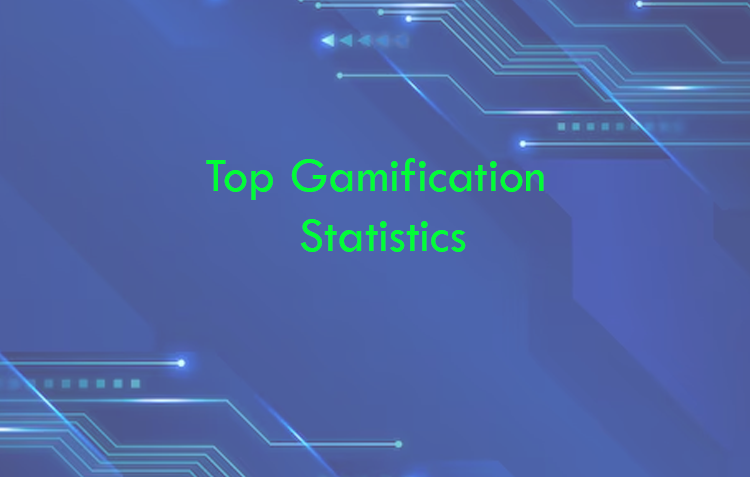Top Gamification Statistics to Know in 2025
1. Market Growth and Revenue Generation:
The gamification market has witnessed substantial growth over the past few years, and this trend is expected to continue in 2023. According to a report by MarketsandMarkets, the global gamification market is projected to reach $32.9 billion by 2023, with a compound annual growth rate (CAGR) of 30.31% during the forecast period. This growth can be attributed to the increasing adoption of gamification across industries such as e-commerce, education, healthcare, and employee training.
2. Enhanced Learning and Training:
Gamification has proven to be highly effective in educational settings and corporate training programs. Research conducted by the eLearning Industry indicates that incorporating gamified elements into learning experiences can increase engagement and knowledge retention by up to 90%. By introducing game mechanics like points, leaderboards, and achievements, learners become more motivated, actively participate, and ultimately acquire a deeper understanding of the subject matter.
3. Employee Engagement and Productivity:
Employee engagement is a critical factor for organizational success, and gamification has emerged as a valuable tool in this regard. A study conducted by TalentLMS found that gamified learning experiences resulted in an 18% increase in employee engagement levels. Furthermore, a report by Gallup revealed that highly engaged teams experienced a 21% increase in profitability. By integrating gamification elements into employee training, performance management, and recognition programs, businesses can foster a more motivated and productive workforce.
4. Customer Loyalty and Retention:
Gamification has proven to be an effective strategy for increasing customer loyalty and retention rates. According to a survey by SuperOffice, 79% of participants stated that they would be more likely to engage with a brand that offers gamified experiences. Furthermore, research by Adobe found that gamification can lead to a 47% increase in customer spending. By implementing gamified loyalty programs, reward systems, and personalized experiences, businesses can create a sense of fun and excitement, encouraging customers to stay connected and loyal to their brand.
5. Health and Wellness Motivation:
Gamification has also made its way into the healthcare industry, serving as a catalyst for behavior change and promoting overall wellness. A study published in the Journal of Medical Internet Research found that gamified interventions led to significant improvements in health outcomes. Additionally, a report by HealthWorks Collective revealed that gamification can increase medication adherence rates by up to 50%. By leveraging game mechanics, healthcare providers can motivate patients to adopt healthier habits, adhere to treatment plans, and achieve better health outcomes.
6. Mobile Gamification:
With the proliferation of smartphones and mobile devices, gamification has found a natural fit in the mobile gaming industry. According to Statista, mobile gaming revenue is expected to reach $100 billion by 2023. This presents a tremendous opportunity for businesses to leverage gamification strategies within mobile apps to engage users, promote brand awareness, and drive revenue generation.
7. E-commerce and Gamified Marketing:
Gamification has become increasingly prevalent in the e-commerce sector as businesses aim to enhance customer engagement and boost sales. Research by the Aberdeen Group indicates that gamified marketing campaigns can lead to a 200% increase in customer engagement. By leveraging techniques such as interactive quizzes, challenges, and rewards, e-commerce businesses can captivate audiences, drive conversions, and foster brand loyalty.
8. Gamification in Sports and Fitness:
Sports and fitness enthusiasts have embraced gamification to enhance their training and motivate physical activity. Fitness apps and wearable devices integrate game mechanics such as challenges, leaderboards, and virtual rewards to make workouts more engaging. A study published in the Journal of Medical Internet Research found that gamified fitness apps increased users’ physical activity levels by an average of 27%.
9. Gamification in Financial Services:
The financial services industry has recognized the potential of gamification in engaging customers and promoting financial literacy. A study by PwC found that 35% of financial institutions are already using gamification, with 42% planning to incorporate it into their strategies. By gamifying personal finance management, budgeting, and investing, financial institutions can educate and empower customers to make informed financial decisions.
10. Gamification for Remote Work:
The COVID-19 pandemic has accelerated the adoption of remote work, and gamification can play a role in maintaining team morale and productivity. A study by Aon Hewitt found that gamification increased employee productivity by 88% in remote work settings. By implementing gamified elements such as virtual team challenges, rewards, and recognition, businesses can foster a sense of camaraderie and motivation among remote teams.
Conclusion:
As we venture into 2023, gamification continues to demonstrate its effectiveness in driving engagement, motivation, and behavioral change across diverse sectors. With the market poised for significant growth, businesses, educational institutions, and healthcare providers should recognize the immense potential gamification holds for enhancing learning, increasing productivity, fostering customer loyalty, and promoting healthier behaviors. By leveraging the power of gamification, organizations can unlock new levels of engagement and forge stronger connections with their audiences in this digital age.



